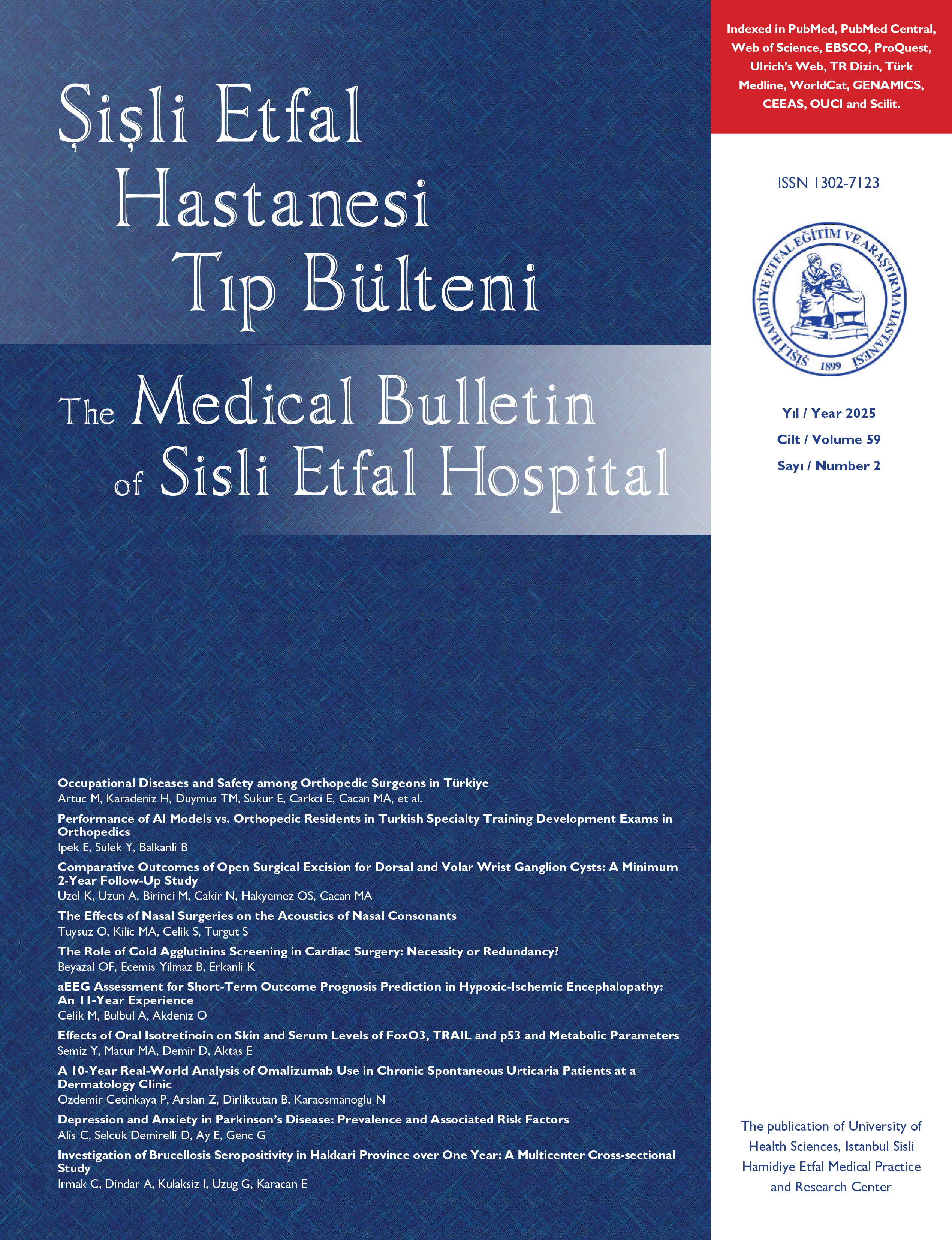
Apse ile Başvuran Tedaviye Yanıtsız ve Osteomiyelite İlerleyen Hasta: Nadir Bir Neden Burkholderia Mallei
Fatma Tugba Cetin1, Ozlem Ozgur Gundeslioglu1, Emel Bakanoglu1, Ummuhan Cay1, Derya Alabaz1, Hale Gumus2, Filiz Kibar2, Bugra Kundakci31Çukurova Üniversitesi Tıp Fakültesi, Pediatrik Enfeksiyon Anabilim Dalı, Adana2Çukurova Üniversitesi Tıp Fakültesi, Mikrobiyoloji Anabilim Dalı, Adana
3Çukurova Üniversitesi Tıp Fakültesi, Ortopedi ve Travmatoloji Anabilim Dalı, Adana
Ruam, Burkholderia mallei'nin (B. mallei) neden olduğu nadir görülen zoonotik bir hastalıktır. B. mallei, insanlarda pnömoni, apse, ciddi vakalarda osteomiyelit, sepsis ve hatta ölüme neden olabilir. Bu raporda kırsal kesimde yaşayan ve ruam tanısı alan 15 yaşında erkek hasta sunulmaktadır. Daha önce herhangi bir hastalığı olmayan hasta, öksürük ve karın ağrısı şikayetleri ile başvurduğu hastanede pnömoni tanısı ile takip edilirken; bacağında ağrı, kızarıklık ve şişlik gelişmesi ile bize başvurdu. Hastanın alt ekstremite manyetik rezonans görüntülemesinde sağ ayak 4. ve 5. metatarslarda osteomiyelit saptandı. Apse kültüründe B. mallei üremesi saptandı. Hastaya meropenem tedavisi başlandı. Hastanın semptomları tedavi ile geriledi. Hasta B. mallei eradikasyonu için oral siprofloksasin ile taburcu edildi. Ruam hastalığı genellikle enfekte hayvanlarla, özellikle at gibi tek tırnaklı hayvanlarla doğrudan temas yoluyla veya B. mallei içeren aerosolün solunması yoluyla bulaşır. Pnömoni ve apseye neden olan ve ağır vakalarda yaşamı tehdit edebilen nadir bir hastalıktır. İlk belirtiler spesifik olmadığı için ruam teşhisi zordur. B. mallei'nin kültürde izolasyonu ruam tanısında altın standarttır. Ruam tedavisinde net bir öneri yoktur ve antibiyotik duyarlılık testine göre imipenem, meropenem, seftazidim kullanılabilir. (SETB-2023-07-115)
Anahtar Kelimeler: Apse, burkholderia mallei, ruamPatient Presenting with Abscess Unresponsive to Treatment and Progressive to Osteomyelitis: A Rare Cause Burkholderia mallei
Fatma Tugba Cetin1, Ozlem Ozgur Gundeslioglu1, Emel Bakanoglu1, Ummuhan Cay1, Derya Alabaz1, Hale Gumus2, Filiz Kibar2, Bugra Kundakci31Department of Pediatric Infection, Cukurova University Faculty of Medicine, Adana, Türkiye2Department of Microbiology, Cukurova University Faculty of Medicine, Adana, Türkiye
3Department of Orthopedics and Traumatology, Cukurova University Faculty of Medicine, Adana, Türkiye
Glanders is a rare zoonotic disease caused by Burkholderia mallei (B. mallei). B. mallei can cause pneumonia, abscesses, osteomyelitis in severe cases, sepsis, and even death in humans. In this report, we present a 15-year-old male patient living in a rural area who was diagnosed with glanders. The patient, who did not have any previous disease, was followed up with a diagnosis of pneumonia in the hospital, where he was admitted with complaints of cough and abdominal pain and presented to us with pain, redness, and swelling in his leg. Magnetic resonance imaging of the lower extremity revealed osteomyelitis in the fourth and fifth metatarsals of the right foot. B. mallei growth was detected in the abscess culture. Meropenem treatment was started. The patient's symptoms regressed with treatment. The patient was discharged with oral ciprofloxacin for B. mallei eradication. Glanders are usually transmitted through direct contact with infected animals, especially single-hoofed animals such as horses, or through inhalation of aerosol containing B. mallei. It is a rare disease causing pneumonia and abscesses and can be life-threatening in severe cases. Diagnosis of glanders is difficult because the initial symptoms are non-specific. Isolation of B. mallei in culture is the gold standard for diagnosing the disease. There is no clear recommendation for treating glanders and imipenem; meropenem ceftazidime can be used based on antibiotic susceptibility tests.
Keywords: Abscess, burkholderia mallei, glandersMakale Dili: İngilizce



















